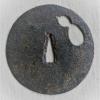Hi Michael,
I don't think correct spelling is based on a voting system, but yes, some people do it differently.
SHIRO is white, but in my experience, most people (and books) use the term SHIRASAYA. Different spelling may also have to do with translating KANJI into ROMAJI which at times seems to be difficult for Japanese people. You sometimes see TUBA written instead of TSUBA, just as an example. Or look at the spelling of KATCHUSHI, KACHUSHI, KACCHUSHI. There is no sound like CCU or TCHU in the KANA system.



